As the dreary trend toward the Universal Transportation Appliance – the crossover SUV, soon to be rendered even more drearily homogenous via electrification – waxes, it might be worthwhile to look at what wanes – in the rearview – and recall some of the heterogenous cars that were once available.
The pillarless hardtop –
Try to visualize a sedan with all four windows lowered and nothing in the resulting space. And with them raised, just a sheet of expansive glass, through which one could see the world outside – including other cars and such, so as to avoid running into them (and them into you).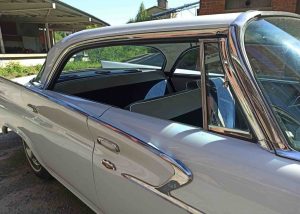
It’s not a fantasy, not a one-off show-car custom. Such cars used to be commonplace in American new car showrooms – and on American roads. They were effectively/functionally sideways convertibles, with comparable airflow when all four windows were down (hence the term, “450 AC” – which meant air conditioning provided for free . . . via all four windows down and 50 MPH).
A few of these cars were also roofless – convertibles – if you can imagine that.
What’s wrong with that?
The pillarless hardtop (or convertible) could not comply with government regulations – specifically, roof crush standards, which came into force beginning in the ‘70s. It is why there were no more pillarless hardtops – or convertibles – by the ‘80s. The regs required that every new car’s roof be strong enough to support the weight of the car if it rolled onto its roof. This is hard to do without a girder-like member in the middle of the roof, attaching it to the car’s frame (usually right in between the front and rear doors).
No one asked why this was any of the government’s rightful business. The Constitution doesn’t say anything about keeping people “safe” – only free. But the latter has somehow been supplanted by the former.
Convertible coupes got around the ukase by cleverly using the upper portion of the driver/front seat passenger’s headrests as roll bars – or equipping the car with a pop-up.
But the regs doomed the pillarless hardtop – both the sedan and the coupe versions thereof.
Now you know why it feels like you’re inside a tank when driving most modern cars, which have thick girders obstructing what you can see – and so frequently don’t see it coming.
The big coupe –
Some of the most iconic cars of the past were full-sized coupes, such as the Cadillac Eldorado of the ‘60s and ‘70s. Many were also pillarless.
These things had driver’s doors that were longer than both doors used in most modern sedans – and more backseat room (three across!) than in most of today’s four-door cars. The size theme continued rearward, where there was usually a trunk big enough to accommodate at least one body rolled up in a carpet and often, two.
Under the hood, there was always a V8 and usually a really big one. The Eldorado of the early-mid 1970s came with an 8.2 liter, 500 cubic inch V8 that – at its peak – conjured 400 horsepower and 550 ft.-lbs.of torque.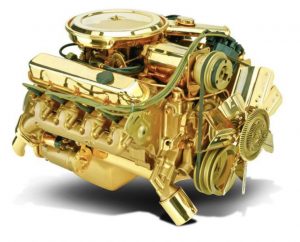
But it wasn’t just Cadillac – or GM – that built such ships of the line. There were also Lincoln Continental coupes, Mercury Marauders and Chrysler Imperials. And there were others, nearly as big – just not as pricey – including the Chevy Monte Carlo and Pontiac Grand Prix – with analogs offered by all the other American car brands.
Ordinary Americans once commonly drove such grand machines.
The American government killed them all off, too – via a different set of regs.
These are the Corporate Average Fuel Economy regs that have forced affordable big cars out of the showrooms and into the history books.
CAFE regs decree that every car company’s entire lineup of cars must average an arbitrarily decreed number of miles-per-gallon (the figure is currently about 35 MPG) else be labeled a “gas guzzler” – its manufacture punished via fines, which raise the selling price of the cars that aren’t “compliant.” The fines quickly made offering such cars for sale untenable, because fewer and fewer ordinary Americans could afford to buy them.
CAFE also killed off the 7-9 passenger station wagons that were once the default family car of the American family.
Until the American government outlawed them, too – without actually passing any laws.
The compact pick up –
There haven’t been any new ones available since 2011, when the last one you could buy new – the Ford Ranger – was taken off the market. Not because it didn’t sell. The problem – for Ford – was that it didn’t generate enough profit. Too many buyers were opting for a Ranger rather than the much more profitable F-150, Ford’s full-size truck. It is much easier to sell a full-sized truck such as the F-150 when there is no alternative to it (other than another full-sized truck).
The rest did the same – sooner.
Nissan “updated” the Frontier pick-up from compact to almost-full-sized in 2005. Toyota did the same the year prior. The smallest new trucks you can buy are all mid-sized bordering on full-size, if you go by historic measures of size.
The price is sized appropriately, too.
As recently as a decade or so ago, you could buy a new compact pick-up for around $13k. That’s about what those same trucks are selling for, today.
Used.
Ford does have a compact vehicle that looks like a truck on deck. But it’s not really a truck. The 2022 Maverick – based on a car, with about the same capacity for work as a car – poses no threat to the F-150.
So we’ll be allowed that option.
For about $20k, to start.
. . .
Got a question about cars, bikes, Libertarian politics – or anything else? Click on the “ask Eric” link and send ’em in! Or email me at [email protected] if the @!** “ask Eric” button doesn’t work!
If you like what you’ve found here please consider supporting EPautos.
We depend on you to keep the wheels turning!
Our donate button is here.
If you prefer not to use PayPal, our mailing address is:
EPautos
721 Hummingbird Lane SE
Copper Hill, VA 24079
PS: Get an EPautos magnet or sticker or coaster in return for a $20 or more one-time donation or a $10 or more monthly recurring donation. (Please be sure to tell us you want a magnet or sticker or coaster – and also, provide an address, so we know where to mail the thing!)
My eBook about car buying (new and used) is also available for your favorite price – free! Click here. If that fails, email me at [email protected] and I will send you a copy directly!


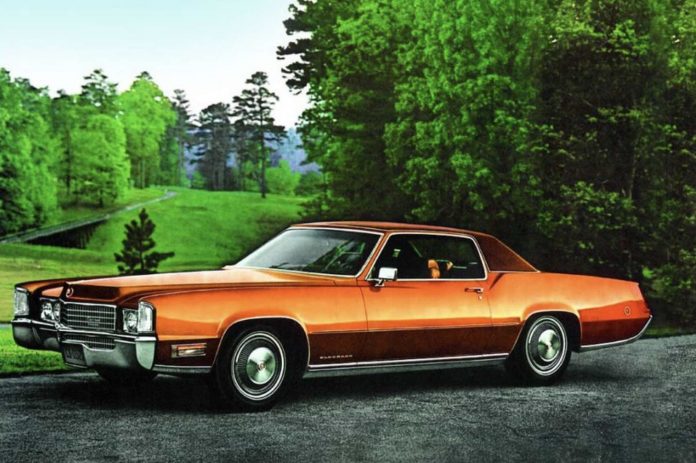

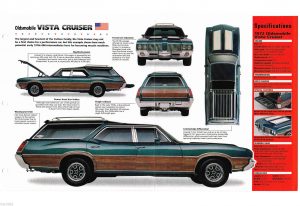







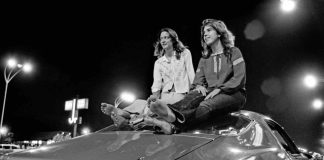
just finishing the restoration on my mom’s ’76 Eldorado Convertible Bi-centennial edition. Challenging to find parts, some of the rubber stuff is fiberglass.. but the engine runs great, (not many carburetor repair guys), the top is clean and operates.. should be a fun ride.
Hi Scott,
Your Eldo is one of my favorite cars! Last of the giants… the carb (Quadrajet) is easy to rebuild and the kist run (last time I checked) about $50 or so. If you’re patient and can follow the instructions in a shop manual/rebuilding and adjustment is very DIY-doable. The main thing many people trip over, in my experience, is fiddling with the factory calibrations, especially as regards float level and secondary air valve tension. These are best left alone unless there’s good reason to adjust.
Apple is working on a transportation appliance which probably shouldn’t be called a car:
‘Under Apple executive Kevin Lynch, Bloomberg reports that Apple is “pushing for a car with a full self-driving system in the first version.”
While Apple declined official comment, a source told Bloomberg that the company’s “ideal car would have no steering wheel and pedals, and its interior would be designed around hands-off driving.”
“The car would also be heavily integrated with Apple’s existing services and devices,” the report said, and would have a large iPad-like touch screen in it. — ZH
Evidently, Apple took the pejorative expression ‘cell phone on wheels’ as a design brief.
This is the pure hubris of tech guys, who think because they are smart and rich, they can conquer unrelated industries with a radical redesign and faster chips.
Apple is doing this because having saturated the planet with iPhones, they need new products to keep revenue growing and the stock price up.
Leaping into a totally different industry rarely works. Apple is headed for a face-plant.
Chevy Bolt batteries are crap. Being recalled. So Chevy dealers can’t sell the Bolts they are stuck with. About 70% of the 2020’s are still on the lot unsold…….
This is the vehicle of the “future” if we can’t stop them folks!
https://gmauthority.com/blog/2021/11/all-unsold-chevy-bolt-ev-bolt-euv-units-will-need-a-new-battery/
What is the last year that a used car is really worth buying?
No question the current full size trucks are large. It’s a plus-minus for me. I love them for how big they are. I feel like I’m driving those large boats of yesteryear I loved so much. The back seat of my Ram crew is awesome. The interior (ram) is one of the nicest I’ve owned from Cadillacs to Buicks, etc…. The ride reminds me of the old large boats too, I love it…… I have the longer bed too which probably helps too.
But…………as you mention a lot Eric, the beds are high, and at 5-8, I can’t reach in from the sides. Have to actually get in the darn thing to remove stuff. They’ve tried to accommodate this problem with each Manuf. having some form of step to make it easier to get in, but ya still have to get in most of the time. The Ram has a little advantage here vs the rest if you have the air-bag system, which I use a lot to load motorcycles. I can lower the truck a decent amount to help. Although it basically gets the load level to about where trucks were 10+ years ago.
I wouldn’t trade the current truck for just a lower load height though I like the rest of it very much.
I don’t ever see a need/want for any bigger than they are right now though. Although, I do miss having a trunk, so maybe a little spot behind the back seats would be nice, even if it lengthens the truck another 6-12″.
Hi Chris,
I’m also a fan of big – but huge (and wide) not as much.
These current half-tons are monstrous, vertically as well as through the hips. I can just barely fit one in my garage – and it leaves room for nothing else. These things use every inch of lane on the narrow two-lanes in my rural area. When I take Old Poage Road home (it’s a narrow one lane, gravel and dirt, with sheer drops on one side and not much room on the other side) in one of these behemoths, I always pray no one will be coming the other way… ’cause one of us is gonna have to reverse it the way they came!
Agree on the wide part and narrow two-lanes. And my truck has the longer bed too so it is even tighter on tighter turns. I love how wide it is inside though. Can sit 3 adults across the back in relative comfort which I do from time to time, and the two outside rear seats recline a little. How cool is that.
Again just plus-minus. I can still get in a parking spot, but I usually park farther out. It would not do well in a city and city parking lots, etc…. but I’m avoiding cities like the plague that they are anyway.
Would I like my current ram in a 3/4 version if it did everything else the same, probably not. 7/8 size? Probably yes.
I quit plumbing in 2000. I cannot imagine trying to work out of one of these trucks where you need to carry an extra step ladder so you can reach your tools and materials. The last truck I bought for the purpose was an 89 Dodge Dakota 4wd, which I specifically bought because it was NOT jacked up like most 4wd trucks, and in fact was the same height as 2wd. Now the 2wd have been jacked up to the same height as the 4wd. Is this some sort of teeny weeny compensation or what?
I’ve always thought that the ’72 Olds Vista Cruiser was a beautiful automobile. Yes, I’m a geezer now, but I thought they were beautiful when they were brand new. And I was 12.
Hi Jon,
Arguably, they were beautiful – functionally! These cars could carry 7-9 people in comfort; they could pull a trailer. They were superior in every functional way to today’s space-inefficient and (usually) fragile-in-comparison “crossovers,” most of which are also just ugly, too!
‘the Universal Transportation Appliance – the crossover SUV, soon to be rendered even more drearily homogenous via electrification’ — eric
… and Wall Street loves it. In today’s dose of Bubble Baloney, Rivian has rocketed from its IPO price last week of $78 to $172 today. Not only is Rivian larger in market cap than GM and Ford, but as of today, it’s larger than Volkswagen too.
That’s despite Rivian having just started selling vehicles and not reporting any revenue yet. Amazon.com is Rivian’s largest shareholder with a 20% stake.
Gonna order muh R1T e-pickup with a plug-in helmet for electroconvulsive therapy.
And they ask me why I eat them blue-tinged shrooms …
Quantitative easing, all that money that they printed ended up inflating the assets of the billionaires, stocks, collector cars, real estate, if you front run it, like buying big pharma stocks 2 years ago, it was profitable……….
Well, has it not always been said that one should “never fight the Fed”? Its just a matter of timing.
Had a 1978 Ford station wagon ca. 1990. Your run-of-the-mill garden variety land yacht, it did everything you could want from a wagon that could haul a house. The steering column fell apart and that meant the wagon made a final trip to the junkyard. Should have fixed the steering column, in hindsight, it would have probably been worth it.
I bought the car from a private party, the odometer had 55,000 some hundred miles. After the purchase, I checked at a local Ford dealership that routinely repaired and maintained the car, the records had a mileage of 77,000 plus miles.
Not fair. Later on, had to change out the engine. Sold the old engine to a person who took the engine and never paid the agreed upon price. Got snookered twice, still was a good car for what it could do, family and all.
You try to keep yourself informed about the issues that dominate the news landscape for something that is most interesting and you do find something that does have to be distributed some more.
https://ratical.org/PandemicParallaxView/Conscience-and-The-Nuremberg-Code.html#MEC
In concert with humanity being subjected to a massive medical experiment is the terrifying level of coercion being exercised by governments and corporations forcing obedience to being injected with an experimental drug. This is genuine, rubber-meets-the road terrorism being carried out by global corporate state governance. People standing up and speaking out against this are exemplars of what freedom truly means. Dr Julie Ponesse was a professor of Ethics at Huron College at the University of Western Ontario. Less than 12 hours after publishing the following short statement, she was dismissed from her 20-year teaching position:
“This is my first, and potentially my last lesson of the year. Ethics 101: in the spirit of Socrates, who was executed for asking questions, this lesson will consist of only one question. The answer is multiple choice. Please listen carefully. When a person has done the same job to the satisfaction of her employer for twenty years, is it right or is it wrong to suddenly demand that they submit to an unnecessary medical procedure in order to keep their job? In this case the procedure is an injection of a substance that has not been fully tested for safety. It has not yet been shown to be effective. It is designed to prevent an illness that poses little threat to the employee. The employee is not allowed to ask questions. She may only submit to the procedure, or be fired. To my first year student: Is this right, or is this wrong?”
https://ratical.org/PandemicParallaxView/Conscience-and-The-Nuremberg-Code.html#MEC
Not her body, not her choice.
The no good sonsofbitches are going to regret this bullshit and will rue the day.
The wheels of justice turn slowly, but grind exceedingly fine and all of that nonchalant jazz.
I remember the odometer rollback trickery from those days. I am surprised its not a big problem with the digital ones, as you would think they would be easy to roll back with a computer hack.
As for the pick and chose “it’s your body” nonsense, only politics can you take both sides of issue and run with it. It is or it isn’t. Well we know the answer to that don’t we? It isn’t.
The only art left in car design is peripherals. Front and rear trim and interiors. In profile they all look the same. In the 60s you could tell a Chevy from a Ford a block away. Now you need to see the badge.
Honestly, I never understood why you’d want a compact pickup vs. a full size. Mileage is a wash and the compact can’t do nearly as much actual work as a full size. Anyone care to enlighten me why you chose a compact over a full size, back when you could?
Back in the day, mileage was not a wash- a small 4 vs a big v8, or even a big v6 as chevy had that 5.0L v6 they used to use I think in the 60s, plus cheaper operating cost of a simple push rod 4cyl, more maneuverable therefore better for city business, and cheaper in general.
Now what you say is true today with crash standards making everything huge. A grand cherokee is about the same size on the inside as 20years ago, but the outside size and weight puts it in full size suv territory of the 1980s, similar to eric’s example with a 1990s f150 vs the current ranger being close in size
That maneuverability also VERY useful off road. In particular the much shorter turning radius. A smaller footprint let’s it go where full size cannot. It’s lighter weight lets it ride over goo that a full size sinks in.
Hi Freeholder,
Size matters!
I have a compact-sized pickup and it is the right size for my needs. I need space in my garage; I need a truck that doesn’t take it up when it is parked. I also prefer a truck that’s able to easily drive down into the field behind my house (a full-size truck is too wide for the trail). I like that the bed is easily accessible, without a ladder. My truck’s engine (in-line four) is also simpler and cheaper to maintain.
Also – in terms of price – a truck like mine was much less costly when it was new than a full-size truck. That would be a big factor for me, were I in the market for a new truck (if desirable new trucks were available).
Why a compact truck? Let me count the ways:
1) Once upon a time they were cheap 2) they were simple and easy to work on, and consequently long-lived 3) they were easy to maneuver in tight spots 4) they were just right for basic commuting when you weren’t carrying passengers 5) if you were off-roading they were much better, more like a Jeep than a tank like the monster trucks of today 6) the bed is low and accessible 7) they can haul 99% of what I need hauled: dead deer, refrigerators, engine blocks, tires, tools, guns and lumber and 8) pretty decent gas mileage.
I put 302,000 miles on two Ford Rangers and a Dodge Dakota, all purchased used, with 4-cyl 5-speed transmissions. (And that doesn’t include an old F-100 I had 30 years ago, which would be considered “compact” in today’s market).
Not everyone needs to tow, but still want a bed to throw things in. And not everyone wants to drive something large.
The pillarless 2 doors of the mid to late 60’s were the pinnacle of design and function for such vehicles. Take, for instance, the 65-67 2 door Impalas and LeManses. They were stylish without being pretentious or effeminate; extremely functional (Could carry 6 people and a lot of cargo); very pleasant to drive; comfortable but not delicate or overburdened with useless crap; Cheap to buy, run and maintain…and very durable. They’ve never improved on ’em…it only went downhill from there.
The luxury-liner 2 doors from the 70’s, while making a style and or status statement, were too bloated; one was too isolated from the road; the amount of plastic increased greatly; the cars were huge, but the actual usable space seemed to have shrunk…….
The 60’s versions were the jeans and a T-shirt of cars: They looked good and were very functional.
The 70’s yachts were the fine suits: Looked nice in the driveway…but you’d better not actually do anything in ’em.
But I’d gladly bring back any of those decades…even the cruddy 80’s if they’d just take away these all-look-the-same smart phones-on-wheels.
‘there was usually a trunk big enough to accommodate at least one body rolled up in a carpet and often, two’ — eric
Muh wah ha ha — Eric’s on a roll today, with the tongue-in-cheek humor.
Diverse people good, diverse vehicles baaaaaaaadddd!
That reminds me of the old country saying. Friends help you move. Good friends help you move bodies… 🙂
I just saved a 96 ranger 4×2 regular cab from the crusher. I got it for 300 bucks. It had been setting awhile…fixed a fuel leak charged the battery…and it started right up Changed all the fluids…its a 5 speed manual The main reason it was viable to fix in the first place. With the 4.0
ohv engine this little sucker hauls ass. I was glad to save it always had a soft spot for rangers. Do not make em like this anymore. New rangers SUCK…..
Small trucks are the way to go for sure, almost done with my 2 month project to bring a ’99 s10 back to life. Std cab short box 2.2 5sp 2wd are nigh on impossible to find anymore, so when I stumbled across this one I snagged it up for $200. A tree limb had fallen on it and smashed the roof and windshield, so after some work with the porta-power and a new windshield its almost done. Between truck and all parts I’m under 500 for a 30mpg truck with all new brakes exhaust clutch and tires. It boggles the mind to see folks throw more money at a tablet with tires, with no quality or style, then I paid for my house property 3k sq ft shop and tools.
“Std cab short box 2.2 5sp 2wd” describes my still well running ’94 S10, Rusty! And there’s no replacing it. Sure glad to still have it, though I had to fabricate a working MAP sensor, and then still register it out of town to escape the emissions test, which it wouldn’t quite pass.
I will keep it running forever if I can.
Thankfully here in the mitten we have no such foolishness, vehicles and people are so dam poor that half the state would be shut down if they instituted vehicle inspections lol. All that’s left to do on this one to have it on the road is drivers door pins, exhaust, and a huge audio system. Typical Michigan vehicle, 200$ truck with a 2000$ stereo lmao
Stupid cracked screen made me anonymous haha
Full size 2 door trucks like K5 Blazer, Bronco, and Ramcharger….probably International Scout as well and Jeep Cherokee Chief, most of which were at least half convertible with no roll bars.
Eric,
From what I understand, small cars and full size SUVs cost about the same to produce; however, the profit margin is greater with big SUVs. Is that the same with large vs. small trucks? It would seem to me that it would cost Ford about the same to produce a Ranger as it does the F-150, so it’s only natural that Ford would favor the F-150…
GMC RV. Sill can’t get anything like it. Used the same 455 and front wheel drive setup as the Toronado and Eldorado, so chassis could be built lower to the ground, increasing hight clearance and ease of entry. Fiberglass body on frame. Good restored examples are available, although probably not appropriate for full-time RV life.
https://en.wikipedia.org/wiki/GMC_motorhome
The EM-50!!! Urban Assault Vehicle!